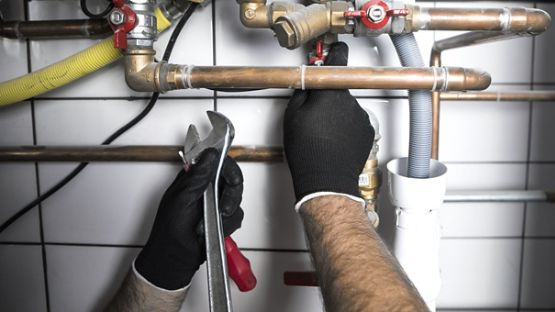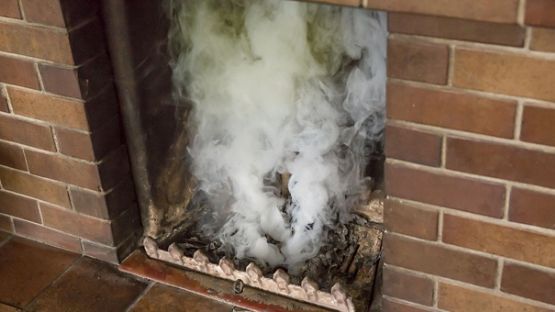Taking on a condo or home renovation can be exciting, but it also comes with plenty of challenges. Whether you’re updating a kitchen, adding a bathroom or finishing a basement, it’s important to plan ahead and make sure you have the right information.
From establishing a realistic budget to ensuring your property and your contractor have the appropriate insurance, these home renovation tips will help guide you through the process so you can feel confident in your decisions.
Key takeaways
- Whether tackling simple DIY projects like painting or embarking on more extensive renovations such as kitchen, bathroom or basement refinishing, many Canadians are choosing to invest in their homes.
- Before starting any renovation work, it's important to inform your insurance representative about your plans. This step ensures you have the appropriate coverage in place, including the possibility of needing Builder's Risk insurance for extensive renovations.
- Establishing a realistic budget, working with a reputable contractor and sub-trades and following the steps outlined in this article can significantly contribute to a successful renovation project. By planning ahead and being mindful of potential unexpected expenses, you can navigate the renovation process with confidence and achieve the home of your dreams.
Canadians love home renovations and plan to stay put
In Canada, home renovations have become an increasingly popular way for homeowners to improve their living spaces without the hassle of moving. With rising housing prices and limited inventory in many areas, many homeowners are choosing to invest in renovations rather than search for a new house.
In fact, a recent study found that the majority of Canadians do not plan on moving within the next year, with 94 per cent intending to stay in their current homes. (Financeit)
According to another report, 31 per cent of Canadian homeowners said they would spend between $10,000 and $50,000 on a home renovation (Made in CA). From kitchen renovations to bathrooms and basement refinishing, Canadians seem focused on transforming their existing homes into their dream spaces. These trends are not just about improving aesthetics; many homeowners are also looking to increase energy efficiency and improve their resale value.
13 steps to a smooth renovation
Undertaking a home renovation can be an exciting but complex process. From the initial design ideas to managing contractors and staying on budget, each step plays a critical role in achieving your dream home.
To help you navigate this journey, we've outlined 13 essential steps that will guide you toward a smooth, hassle-free renovation.
1. Inform your insurance representative before you start anything
Before you swing the hammer, it’s important to let your insurance representative know about your renovation plan. Many homeowners overlook the potential impact on their home insurance when starting a renovation project.
It’s important to keep your insurance provider advised ahead of all major home construction or renovations. In the event of a loss event during the renovations - not advising your insurance provider will likely result in you being underinsured for liability or physical damage leaving you solely responsible for any costs.
Some insurance provides like Aviva Canada may require a Major Renovation Endorsement to eligible clients who are completing renovations to their home, to ensure they have sufficient coverage for common risks associated with major renovations.
If you’d like to know more, visit Aviva’s home insurance page to explore your options.
2. Collect inspiration to articulate your vision
Every successful renovation project starts with a vision. Whether you’re working with a designer or going it alone, start collecting your design ideas from platforms like Pinterest, Houzz or clippings from design magazines. This step allows you to fine-tune the look and feel of your project before the renovation process begins.
While aesthetics are important, remember that functionality is key, especially in high-traffic areas like the kitchen or bathroom. Consider carefully how you’ll use the space, how hardwearing surfaces need to be and other practical matters.
3. Set a realistic budget
Once you have a vision, you can start to price out materials, fixtures, appliances, etc.
Indeed, one of the most important parts of a successful home renovation is setting a realistic budget. Many homeowners tend to underestimate the costs involved in a house remodel, which can lead to surprises later in the renovation process. When creating your budget, make sure to include:
- Labour and materials.
- Fees for architects, interior designers or structural engineers.
- Permits and other administrative tasks. Including a project manager if it’s a larger project.
- Contingency costs: A general rule of thumb is to allocate around 30 per cent of your total budget for contingencies. This will go towards unforeseen things that may be discovered during the renovation, like:
- Asbestos removal
- Old wiring that needs upgrading
- Structural surprises hidden behind walls
- Fluctuating costs of materials
Pro-tip: Experts suggest that you plan to invest no more than five to 15 per cent of your home’s value into your kitchen and bathroom renovations. (National Bank)
To ensure your budget is accurate, create a checklist that covers every step of the project, from major tasks like replacing plumbing fixtures to small details like paint colours, cabinet hardware and soft furnishings. If these items need to be ordered from overseas, remember to budget for customs duties and taxes.
As you work through the budget it will probably become apparent that compromises must be made. The budgeting process will help you prioritize what’s really most important and can help you make smart decisions about where to spend your money.
4. Decide what you’ll do yourself vs. hiring a contractor
For some parts of the renovation project, you may choose to take the DIY route. However, it’s important to know where to draw the line. Complex tasks like plumbing, electrical work and structural changes should be handled by licensed professionals who meet insurance requirements.
Be realistic about your skill level and how much time you have to complete tasks like painting or installing fixtures. But going the DIY route can certainly help save some money along the way.
5. Choose your contractor carefully
Finding the right contractor is one of the most important steps in the renovation process. A good contractor will ensure the job is done right, on time and within budget. Here are a few tips for choosing a contractor:
- Check references and reviews: Ask the contractor for a list of past clients who had similar renovation projects. Reach out to them and ask about their experience, quality of work and if the project was completed on time and within budget. Online reviews and testimonials can also provide additional insights but don’t rely on these solely.
- Verify credentials and insurance: Ensure the contractor has the proper licenses, certifications and insurance to cover any potential issues. Ask for proof of liability insurance and worker’s compensation and confirm that they meet local and provincial requirements. Ask to be added as an “additional insured” on their policy for extra protection. Remember to have your insurance company validate that your contractors meet insurance requirements.
- Get multiple quotes: Comparing quotes from several contractors gives you a clearer idea of the project's fair cost. But don’t just go for the lowest price. Look at the details in each quote, like timelines, materials and scope of work.
- Check their relationship with sub-trades: A good contractor has strong connections with reliable sub-trades (electricians, plumbers, etc.). Ask how they vet and manage their sub-trades to ensure the quality and consistency of the work.
- Look for clear communication: A contractor who communicates clearly and consistently is key to a smooth renovation. During the vetting process, evaluate how they handle questions and concerns. Are they responsive, organized and willing to put everything in writing?
- Review their portfolio: Ask to see examples of completed projects similar to your renovation. This will give you an idea of their expertise in specific styles, materials or complex tasks.
- Sign a detailed contract: Ensure the contract includes everything: scope of work, timelines, materials, costs, payment schedules and any warranties. This contract should protect both you and the contractor and set expectations.
6. Consider what’s beneath the surface
While it’s easy to focus on the design plan for your kitchen renovation or new bathroom, remember that what’s beneath the surface is just as important.
Especially if you live in an older home, there may be hidden problems like outdated wiring, poor insulation or even structural issues that need attention. Although these upgrades may increase your renovation costs, this is the best time to address them. After all, fixing these problems now will save you money down the line.
7. Think about environmental upgrades and responsible waste disposal
Energy-efficient home renovations are highly favoured by homeowners, with 62 per cent indicating they are likely to invest in such upgrades in order to save money (Financeit). Indeed, a home renovation is the perfect time to consider sustainable options and energy-saving upgrades.
Installing energy-efficient appliances, improving insulation or switching to a tankless water heater can help you save money on energy bills while reducing your environmental impact.
Home renovations can also generate a significant amount of waste. So, when disposing of old materials like kitchen cabinets or bathroom fixtures, consider donating them to charities like Habitat for Humanity.
8. Secure the necessary permits
Before any major renovation work can begin, you’ll need to secure the proper permits. Skipping this step can result in costly fines and delays in your renovation project. Your contractor may handle this step for you, but make sure they do so.
Check with your local municipality to find out what permits you need, whether for structural changes, electrical work or plumbing.
9. Give your workers space
If your renovation is extensive, it might be best to move out temporarily. This gives the workers the space they need to do their job efficiently without worrying about your belongings. If you need to relocate temporarily, it’s best to ensure you have the necessary tenants insurance policy at your temporary residence as well.
If moving out isn’t an option, consider moving your valuables and creating clear pathways for the workers to navigate.
10. Stay on top of progress without micromanaging
It’s important to stay involved in the renovation process, but micromanaging can slow things down. Instead, articulate your vision clearly. Make sure everything is documented and that all parties are on the same page. Having a clear, version-dated design plan will minimize confusion if revisions happen along the way.
For example, specify the exact paint colours (make, sheen and colour code) or the tile layout you want for the walls. If you aren’t specific, your trade may make assumptions that were not what you wanted. While they may express contrary opinions about your style choices, remember it’s your home and you’ll be the one living there after they’ve packed up their tools and moved on.
11. Prepare for delays
Delays are a common part of any home renovation. Whether it’s due to long lead times for materials or weather conditions, it’s essential to keep your expectations in check. While nobody enjoys delays, it’s better to wait and get the job done right than to rush and make costly mistakes.
12. Maintain good relationships with your tradespeople
The success of your renovation project depends heavily on the relationships you have with your tradespeople. There will inevitably be mistakes or miscommunications along the way, but staying calm and respectful can go a long way. Contractors and tradespeople do their best work when they feel appreciated.
13. Reconnect with your insurance representative
Before your planned renovations, be sure to update your home or condo insurance policy to reflect your home’s increased value. The replacement value of your home may change significantly depending on the renovation work.
A successful home renovation starts with a solid renovation plan, choosing the right team and staying informed throughout the process. By working closely with your contractor and insurance representative, planning for unexpected expenses and keeping your vision clear, you can ensure your renovation goes as smoothly as possible.
Finally, once your home renovation is complete, protect your investment by ensuring you have the following important coverages in place to protect your newly renovated home:
- Water protection, including sewer backup and overland water
- Cyber coverage to help keep you and your family safe from digital risk
Contact your insurance representative to find out which options are available, and the right coverage for you.













